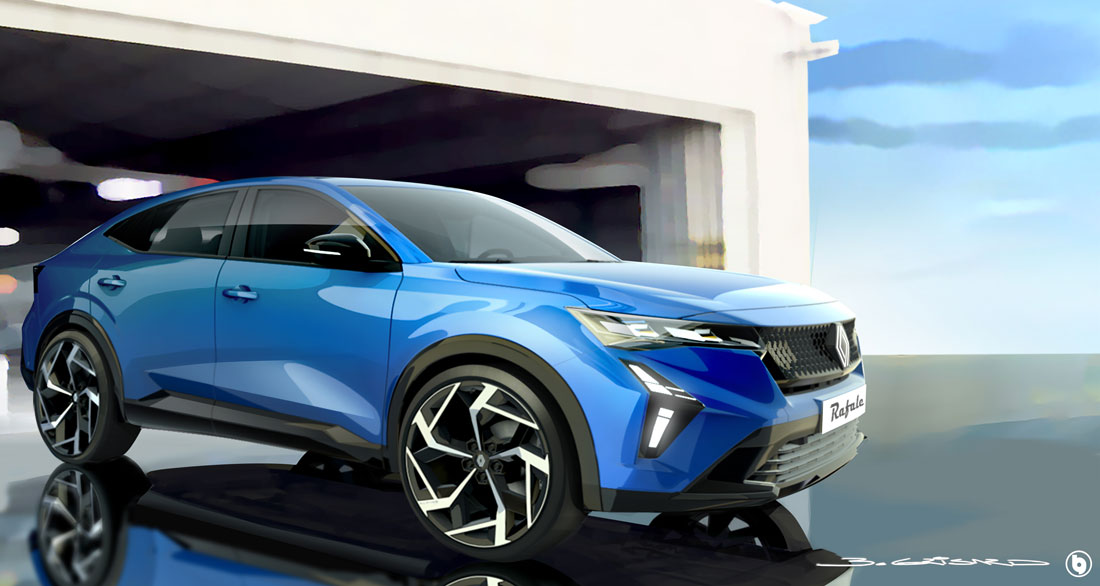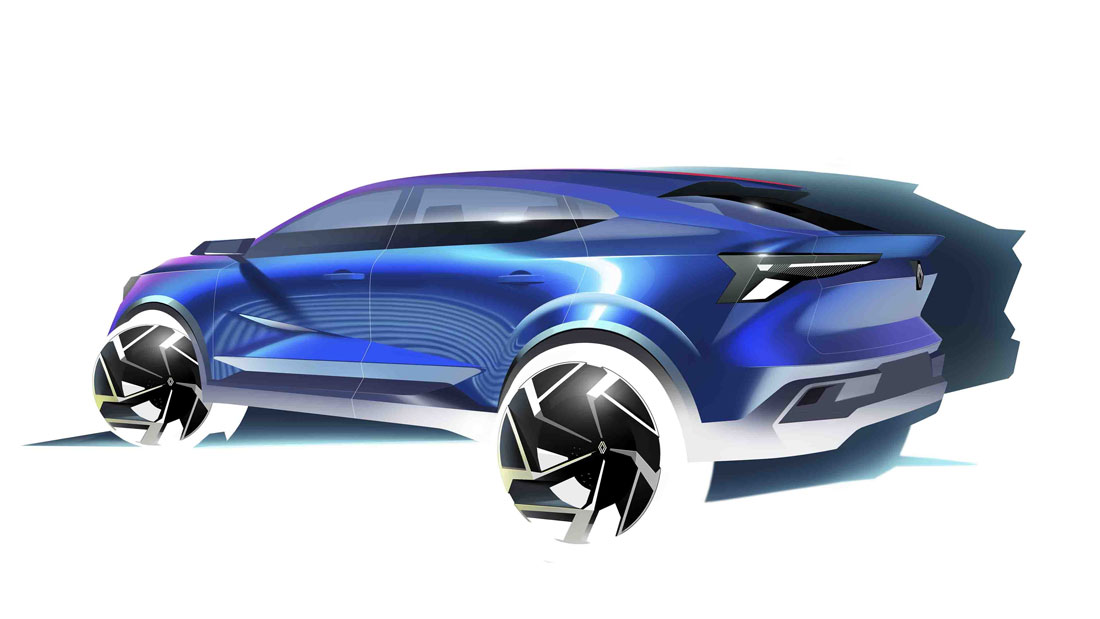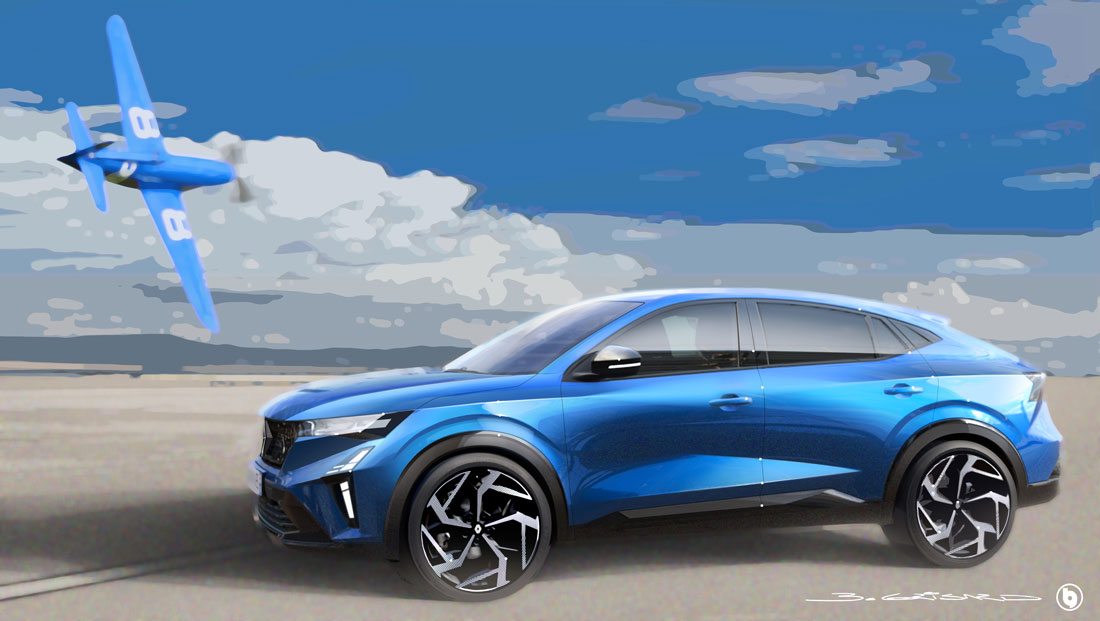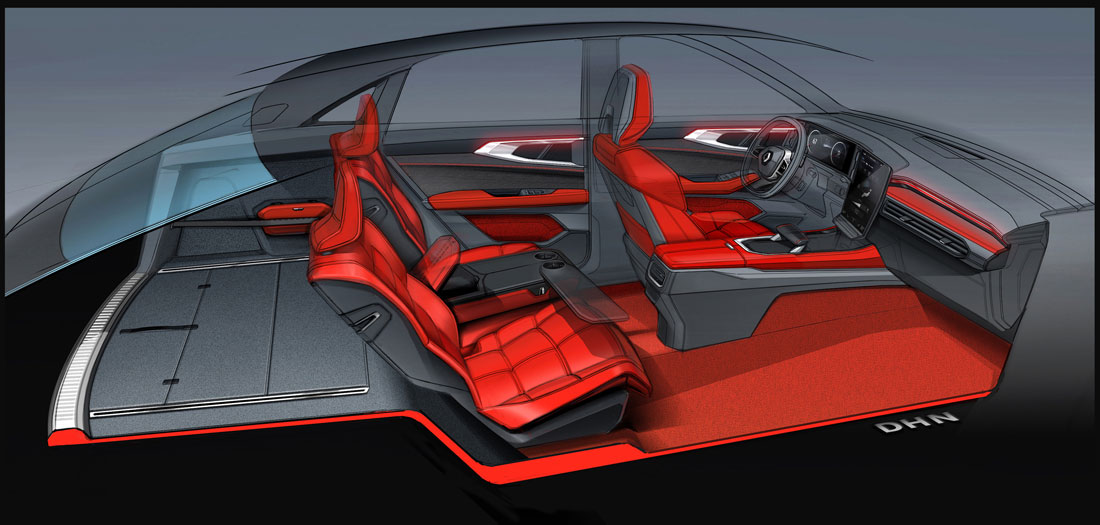No questioning that 2020 was a special year for the entire planet, but at Renault it will be remembered above all for the breath of fresh air that swept through the company with the arrival of new CEO Luca De Meo and the unveiling of his ‘Renaulution’ strategic plan. In the ensuing organisation-by-brands shake-up, Laurens van den Acker was appointed Executive VP for Design at the Renault Group (thus heading up the four Renault, Dacia, Alpine and Mobilize studios). 2020 also saw the arrival of Gilles Vidal to run Renault’s brand design at a time when De Meo was stressing the need for a broader portfolio of C and D segment models, including a new flagship to be built immediately.
Aeronautical origins
That’s where the Rafale came from: a blast of fresh air that took on material form. Its name says it all, a reference to the world of aeronautics and the historic Caudron Renault Rafale, a record-breaking aircraft that reached 445 km/h in 1934. “We started from a blank sheet of paper to create the new top-of-the-range car based on the CMF-CD platform”, says Vidal, whom we met at Le Bourget on the occasion of the car’s debut at the last Paris Air Show.
Expression determined
The front had to fit in with the role of the model, Vidal continued. “It has a determined expression and we focused on all the details. The luminous signature of the daytime running lights refers to the lozenge of our logo and thus directly to the brand, as on the new Clio. The sloping grille motif, which hides a blue background, is also inspired by the lozenge. The texture varies depending on the point of view, as if it were animated, it is extraordinary with the car in motion. It is one of the elements that generate a magical effect”. An aspect that responds to Luca De Meo’s request to the designers: to bring magic back to cars.
Flagship of our time
The Rafale is one of a triptych of cars flanked by the Austral and Espace, with which it shares the interior, but its design was initiated later and its silhouette is completely specific, as are the surface treatments which follow new codes, explains Agneta Dahlgren, director of design projects for segments C and D. “It had to become the flagship, at once bold and visionary. If you want to be visible in a fiercely competitive market, with new brands coming in practically every day, you need a design that stands out in the crowd.
Unexpected folds
We played a lot on two levels, marrying the premium aspect to sportiness, with dynamic and sculptural lines”. As always, the teamwork with the engineers was fundamental, both for the aerodynamic efficiency of the car body and for the unexpected creases the sheet metal takes on at the sides: “To mark the lines with precision you also have to make progress in terms of pressability and we gave our technicians a lot of work in this sense; they responded exceptionally”.
Premium sensation
Innovative as it is in its design language, the Rafale is no less so when it comes to the materials in the cockpit, where we encounter slate and cork, “uncommon for a generalist brand”, observes Dahlgren. The cork is dyed deep black, while the slate is treated with a “peeling” technique to obtain a very thin layer with which certain elements are covered, in particular the hand rest on the central tunnel, “where you touch it you feel real stone, as designers we are proud to have been able to achieve this. And then, in the Esprit Alpine trim on the backrests there is the A that lights up with a sequence that pulsates like a heartbeat: it is a sign of our passion for cars”.
(Full article in A&D no. 262)
















